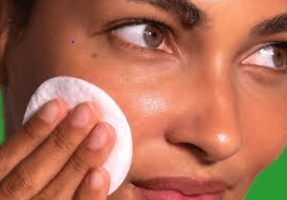Struggling with those tiny bumps that just won’t go away? You’re not alone. Clogged pores under the skin affect nearly everyone at some point, regardless of skin type or age.
These stubborn blemishes—often called closed comedones or subcutaneous congestion—can be frustrating to deal with because they’re not quite pimples but definitely not smooth skin either. The good news? With the right approach, you can clear those clogged pores and achieve the smooth, radiant complexion you deserve.
From understanding what causes these pesky bumps to implementing an effective skincare routine that actually works, this guide will explore everything you need to know about how to get rid of clogged pores under the skin, you’ll walk away with practical solutions that can transform your skin.

What Are Clogged Pores Under the Skin?
Clogged pores, medically known as comedones, occur when dead skin cells, sebum (oil), and sometimes bacteria become trapped within your pores.There are two primary types of clogged pores:
Open comedones (blackheads): These appear as small, dark spots on the skin’s surface. The dark color comes from the oxidation of sebum when exposed to air.
Closed comedones (whiteheads): These appear as small, flesh-colored or whitish bumps that remain under the skin’s surface. These are typically what people refer to when they talk about ‘clogged pores under the skin.’
When pores become clogged beneath the surface, they create those frustrating bumps that can’t be easily extracted. Unlike inflammatory acne (like papules or pustules), clogged pores don’t typically hurt or come to a head—they just stubbornly remain, sometimes for weeks or months.
Main Causes of Clogged Pores Under the Skin
Understanding the causes of your clogged pores is crucial for effective treatment. Here are the primary culprits:
Excess Sebum Production
Our skin naturally produces oil (sebum) to protect and moisturize. However, when the sebaceous glands produce too much oil, it can mix with dead skin cells and clog pores.
Dead Skin Cell Buildup
Your skin naturally sheds dead cells, but sometimes they don’t slough off properly. Instead, they accumulate on the skin’s surface and inside pores, leading to congestion.
Improper Skincare Routine
Using products that are too heavy or comedogenic (pore-clogging) can worsen the situation. Makeup that isn’t thoroughly removed can also contribute to clogged pores.
Hormonal Changes
Fluctuations in hormone levels, particularly during puberty, menstruation, pregnancy, or due to certain medical conditions, can increase sebum production.
Environmental Factors
Pollution, humidity, and excessive sweating can all contribute to clogged pores by trapping dirt and debris on the skin.
 Genetics
Genetics
Some people are simply more prone to clogged pores due to their genetic makeup, which affects skin type and pore size.
Understanding which factors are contributing to your clogged pores will help you develop a targeted approach to clear them.
Effective Strategies to Get Rid of Clogged Pores Under the Skin
Let’s explore the most effective strategies to eliminate them:
-
Establish a Consistent Cleansing Routine
Double Cleansing
This two-step process involves using an oil-based cleanser to remove makeup, sunscreen, and excess sebum, followed by a water-based cleanser to clean the skin itself. This approach ensures that all pore-clogging debris is thoroughly removed.
Choose the Right Cleanser
Look for non-comedogenic cleansers with ingredients like salicylic acid, which can penetrate the pores and dissolve excess oil and dead skin cells. Avoid harsh soaps that strip the skin of its natural oils, as this can actually trigger more oil production.
Proper Cleansing Technique
Use lukewarm water (not hot), as hot water can stimulate oil production. Massage the cleanser gently in circular motions for about 60 seconds to allow active ingredients to work. Rinse well and use a fresh towel to pat dry.
-
Exfoliate Regularly but Gently
Chemical Exfoliants
Unlike physical scrubs, chemical exfoliants dissolve the bonds between dead skin cells, allowing them to be easily removed. The two main types are:
AHAs (Alpha Hydroxy Acids) like glycolic acid and lactic acid work on the skin’s surface to remove dead skin cells and improve texture.
BHAs (Beta Hydroxy Acids) like salicylic acid are oil-soluble and can penetrate deeper into the pores to remove excess sebum and debris.
Frequency Matters
Start with once or twice weekly exfoliation and gradually increase as your skin builds tolerance. Over-exfoliation can damage your skin barrier and worsen clogged pores.
Enzyme Exfoliants
Derived from fruits like papaya and pineapple, enzyme exfoliants offer a gentle alternative for sensitive skin types. They work by breaking down the protein in dead skin cells.

-
Incorporate Retinoids Into Your Routine
How Retinoids Help
Retinoids (vitamin A derivatives) are perhaps the most effective ingredients for treating and preventing clogged pores. They increase cell turnover, prevent dead skin cells from sticking together, and regulate sebum production.
Types of Retinoids
Over-the-counter options include retinol and adapalene (Differin), while prescription-strength options include tretinoin and tazarotene.
Proper Application of Retinol
Start with a low concentration and apply it 2-3 times weekly, gradually increasing frequency as your skin adjusts. Always apply to clean, dry skin in the evening, and follow with a moisturizer to minimize irritation.
Patience is Key
Retinoids can take 8-12 weeks to show significant improvement, and you might experience initial purging as clogged pores come to the surface.
-
Use Clay or Charcoal Masks
Absorbent Properties
Clay and charcoal masks work by absorbing excess oil and drawing impurities from the pores. Popular options include kaolin clay, bentonite clay, and activated charcoal.
Targeted Application
Apply masks to areas prone to congestion, such as the T-zone (forehead, nose, and chin). There’s no need to cover areas that don’t have clogged pores.
Frequency
Use these masks 1-2 times weekly, being careful not to leave them on until they’re completely dry, as this can dehydrate the skin.
-
Try Professional Treatments
Professional Extractions
Done by a licensed esthetician or dermatologist, this involves manually removing the contents of clogged pores using specialized tools and techniques.
Chemical Peels
These treatments use stronger concentrations of acids to exfoliate deeper layers of skin, removing dead cells and clearing clogged pores.
Microdermabrasion
This procedure physically exfoliates the skin’s surface, removing dead skin cells and stimulating cell turnover.
Hydrafacials
These combine cleansing, exfoliation, extraction, and hydration in one treatment, effectively clearing clogged pores while nourishing the skin.

-
Maintain a Balanced Diet and Lifestyle
Hydration
Drinking adequate water helps flush toxins and maintains skin hydration, which can reduce the likelihood of clogged pores.
Anti-inflammatory Foods
Incorporate foods rich in omega-3 fatty acids, antioxidants, and zinc, which can help regulate oil production and reduce inflammation.
Stress Management
Chronic stress can trigger hormonal fluctuations that increase sebum production. Regular exercise, adequate sleep, and relaxation techniques can help manage stress levels.
-
Choose Non-Comedogenic Products
Skincare Products
Always check labels for ‘non-comedogenic’ or ‘won’t clog pores’ claims. This is especially important for leave-on products like moisturizers and serums.
Makeup
Opt for oil-free, non-comedogenic foundations and concealers. Consider mineral makeup, which tends to be less pore-clogging than traditional formulations.
Sunscreen
Never skip sunscreen, but choose formulations labeled as non-comedogenic or oil-free. Gel or liquid formulations are often better for acne-prone skin than thick creams.
Building an Effective Skincare Routine to Prevent Clogged Pores
To effectively tackle clogged pores under the skin, you need a comprehensive routine. Here’s a suggested skincare regimen:
Morning Routine
Gentle Cleanser- Start with a mild, non-comedogenic cleanser to remove any oil buildup from overnight.
Toner (Optional)- Choose an alcohol-free toner with ingredients like witch hazel, niacinamide, or tea tree oil to balance the skin’s pH and provide additional benefits.
Lightweight Serum- Apply a hydrating serum containing ingredients like niacinamide (which regulates sebum production) or hyaluronic acid (which provides oil-free hydration).
Oil-Free Moisturizer- Even oily skin needs hydration. Look for gel-based or lightweight lotion formulations.
Sunscreen- Finish with a broad-spectrum, non-comedogenic sunscreen with at least SPF 30.
Evening Routine
Double Cleanse- Remove makeup and sunscreen with an oil cleanser, followed by your regular cleanser.
Exfoliant (2-3 times weekly)- Apply your chosen chemical exfoliant, focusing on areas prone to congestion.
Retinoid (alternate nights)- Apply a pea-sized amount of retinoid to clean, dry skin, avoiding the eye area.
Hydrating Serum- Look for ingredients like hyaluronic acid, glycerin, or panthenol to replenish moisture without clogging pores.
Moisturizer- Choose a non-comedogenic option to seal in hydration and support skin barrier function.
Weekly Treatments
Clay or Charcoal Mask- Apply to congested areas 1-2 times weekly.
Gentle Physical Exfoliation (Optional)- If your skin tolerates it, a gentle physical exfoliant once weekly can help remove loosened dead skin cells.
FAQs
How long does it take to get rid of clogged pores under the skin?
Results vary depending on the severity of congestion and your chosen treatment method. With consistent use of appropriate products and techniques, you may see improvement in as little as 2-4 weeks.
However, complete resolution of deeply clogged pores typically takes 8-12 weeks, especially when using retinoids. Patience and consistency are key—avoid the temptation to try aggressive treatments that promise quick results but may damage your skin.
Can diet affect clogged pores under the skin?
Yes, diet can significantly impact skin health and pore congestion. Studies have shown links between high-glycemic foods (like white bread, sugary snacks, and processed carbohydrates) and increased sebum production and inflammation.
Dairy products, particularly skim milk, have also been associated with acne and pore congestion in some individuals. Focusing on a balanced diet rich in fruits, vegetables, lean proteins, and healthy fats can support clearer skin from within.
Is it safe to extract clogged pores at home?
While it’s tempting to squeeze or extract clogged pores yourself, this can lead to inflammation, infection, and even scarring if not done properly. Professional extractions performed by dermatologists or licensed estheticians are much safer and more effective.
Why do I keep getting clogged pores in the same areas?
Recurring clogged pores in specific areas often indicate underlying causes that need to be addressed. For example, clogged pores on the forehead might be related to hair products or frequent touching, while chin congestion often correlates with hormonal fluctuations.
Additionally, some areas naturally have more sebaceous glands, making them more prone to clogging. Identifying these patterns can help you develop targeted prevention strategies for those specific areas.
Can clogged pores turn into acne?
Yes, clogged pores (comedones) are actually the first stage of acne development. When bacteria (specifically P. acnes) proliferate within a clogged pore, it can trigger inflammation, transforming a simple clogged pore into an inflammatory acne lesion like a papule, pustule, or even a cyst.
This is why treating clogged pores early is crucial for preventing more severe forms of acne.
Conclusion…
Getting rid of clogged pores under the skin requires a multi-faceted approach that addresses the root causes of congestion while supporting your skin’s natural functions. By establishing a consistent skincare routine featuring gentle cleansing, appropriate exfoliation, and targeted treatments like retinoids, you can effectively clear existing clogged pores and prevent new ones from forming.
Give your treatments time to work, typically 8-12 weeks, before deciding whether they’re effective. And always listen to your skin, adjusting your routine if you notice irritation or sensitivity, the journey to clear, smooth skin is a marathon, not a sprint.
Your skin is your body’s largest organ and deserves thoughtful care and attention. By implementing the evidence-based approaches outlined in this guide, you’re taking an important step toward healthier, clearer skin that will serve you well for years to come.



